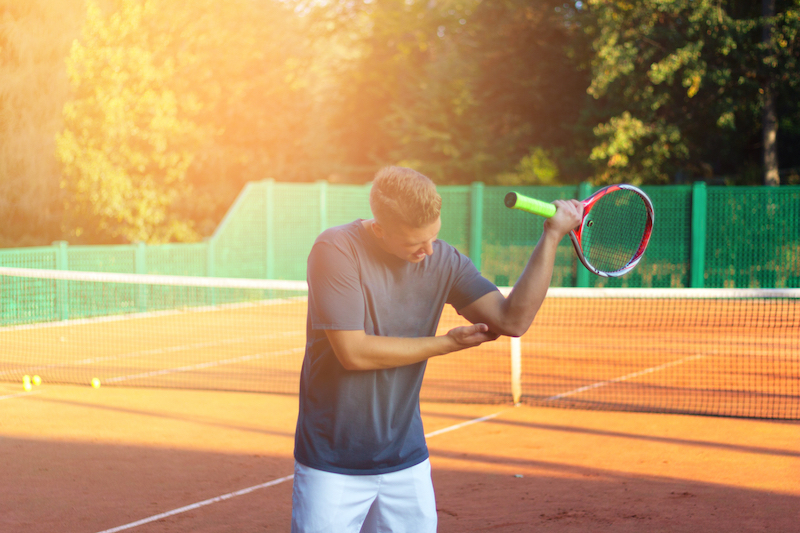Looking for Tennis Elbow Treatment in Hanford? Try these things first to avoid the treatment altogether – read on…
Tennis is a great form of physical activity that works many parts of the body due to its demanding dynamics, but just like every other sport, it also comes with a risk for injury. The most common injury in the sport is called lateral epicondylitis or epicondylalgia, which is usually referred to as tennis elbow. Tennis elbow can be a truly bothersome injury, but there are several ways to prevent it from happening and address the symptoms if it does.
Tennis elbow is an overuse injury, meaning it results from performing the same movements repeatedly for a long period of time. Athletes who play tennis and other racquet sports therefore have a particularly high risk for developing tennis elbow, but it can occur in anyone who performs repeated movements that involve the elbow.
The lateral epicondyle is the bony bump on the outside of the elbow. When the arm is overworked, a muscle in this region gets weakened, which eventually leads to microscopic tears in the tendon that attaches to the lateral epicondyle. This results in inflammation of this tendon—called lateral epicondylitis—which leads to symptoms like pain, a burning sensation in the outer part of the elbow, and weakened grip strength.
The good news for patients with tennis elbow and looking for tennis elbow treatment in Hanford, it usually heals on its own with some basic remedies, as approximately 80-95% of patients will have a successful outcome and don’t need surgery. But there are also plenty of ways to prevent tennis elbow from occurring in the first place.
To reduce your risk for tennis elbow, follow these tips:
- Learn to use your shoulder and upper arm muscles to take the strain off your elbow
- Stick to the middle of your range of motion during strokes, and avoid bending or straightening your arm all the way
- Make sure your racquet is right for you; lighter weight, larger grips, and softer strings may reduce the strain on your tendons
- Take breaks from tennis to play other sports throughout the year to avoid overuse
- Try to maintain adequate fitness and flexibility levels with conditioning exercises
- Avoid repeating any one type of stroke, and practice a range of strokes instead
If symptoms of tennis elbow are noticed, however, patients should see a physical therapist first and fast. Therapists are experts at identifying the cause of the pain, and from here, can design a personalized treatment program that alleviates symptoms and restores any function that may have been lost. The benefits of seeing a therapist can be illustrated in the findings of a study published in 2016, which compared the cost-effectiveness of physical therapy to steroid injections, another popular treatment for tennis elbow. The study’s conclusion reads:
Physical therapy was a cost-effective treatment for tennis elbow…A combination of steroid injections and physical therapy was ineffective and cost-ineffective. Physical therapy, not steroid injections, should be considered as a first-line intervention for tennis elbow.
So for all the tennis players out there, keep these tips in mind to keep your risk for tennis elbow at a minimum. And for any elbow-related pain that you do experience, be sure to see a physical therapist right away before it progresses any further.

